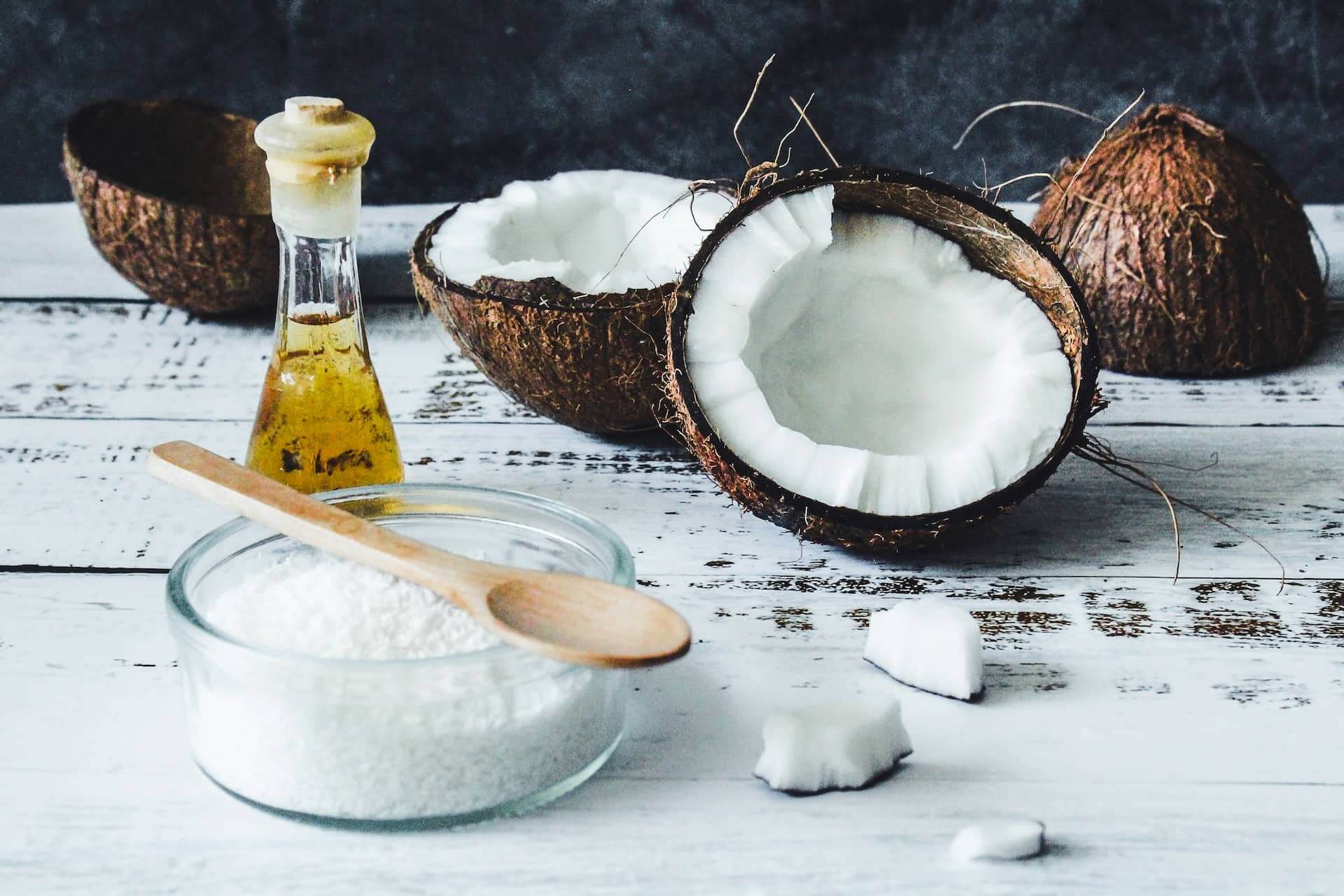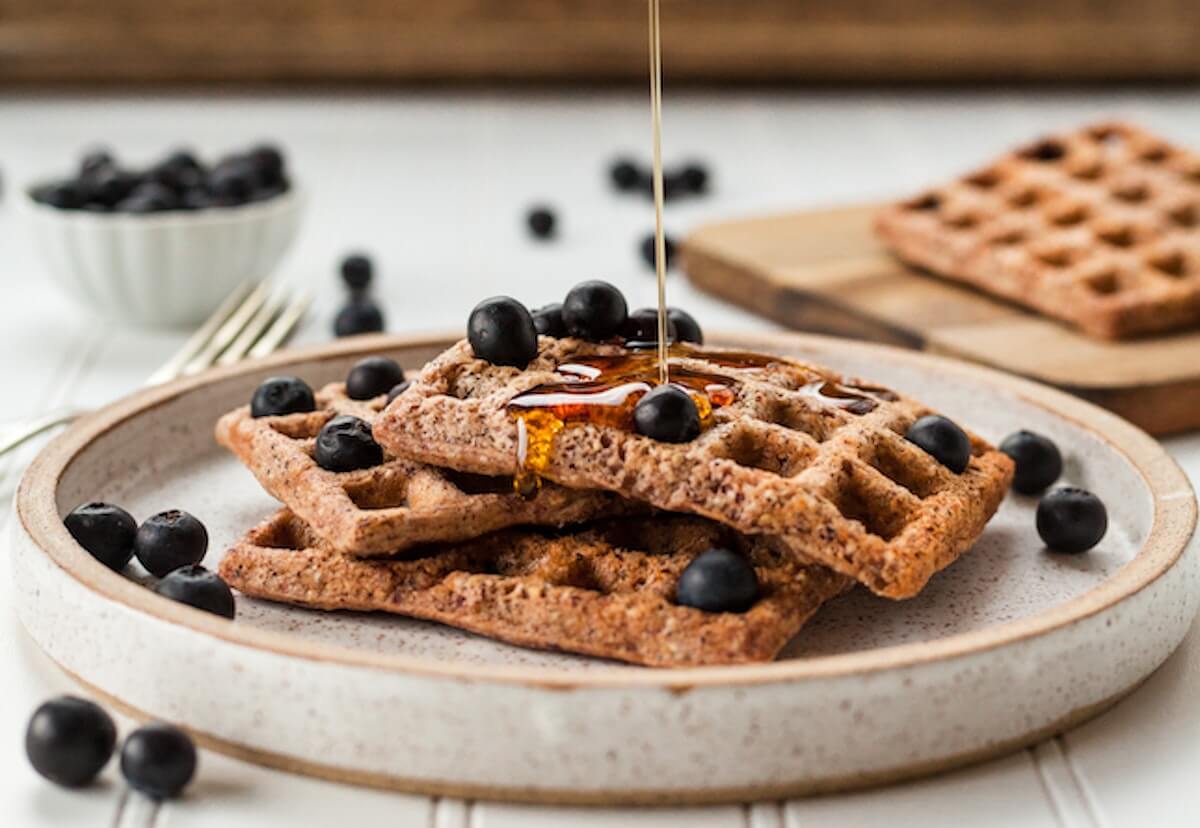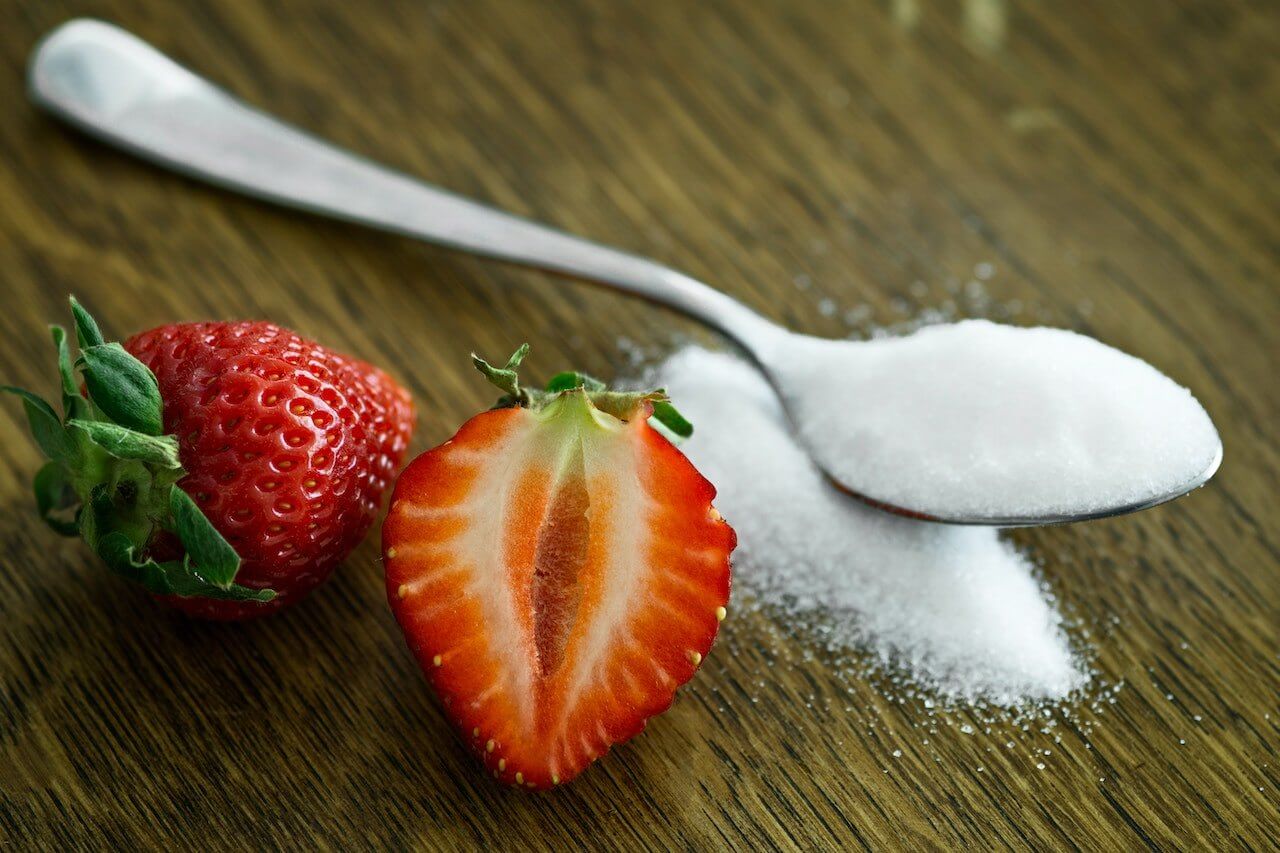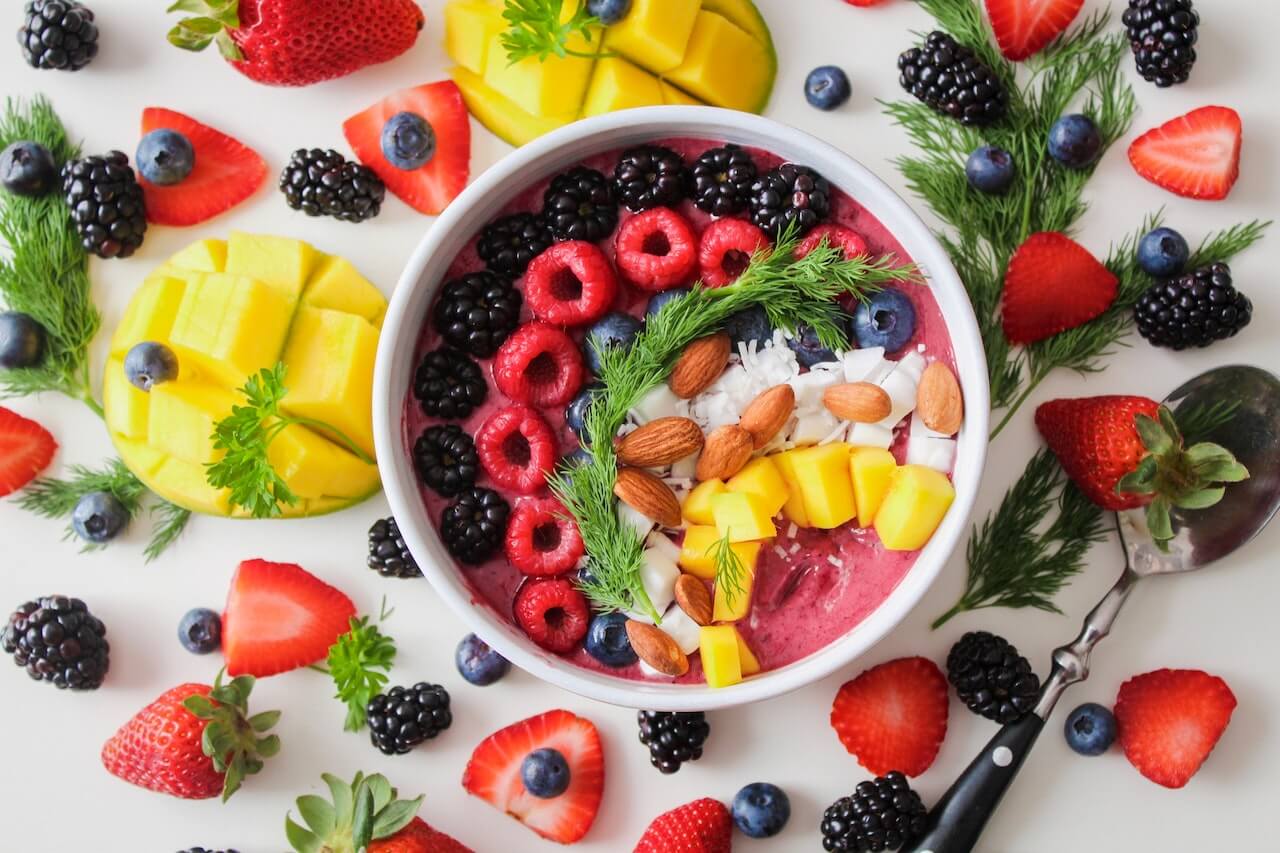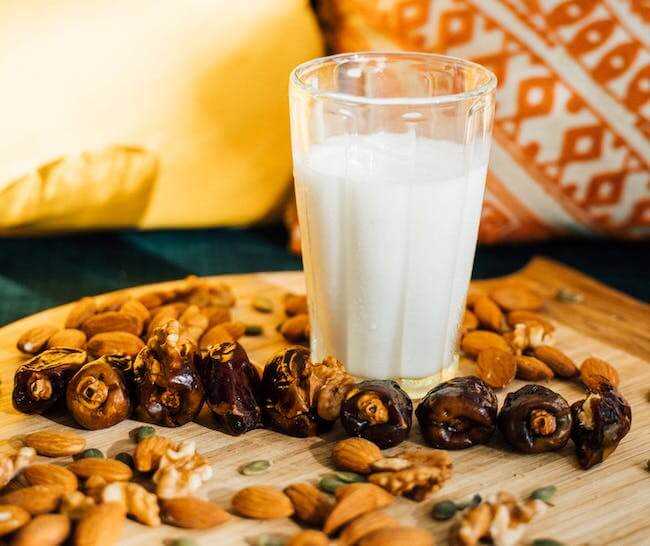Avoiding or limiting sugar is one thing health professionals agree upon. Sugar contains no nutrients. This means there is nothing good for our bodies found in sugar. Research has made it abundantly clear that high intakes of sugar are involved in the development of many chronic diseases (obesity, diabetes, elevated lipid levels and cardiovascular disease, inflammation, and cavities).¹,²
Sugar helps to make our food more enjoyable but should be used in moderation. The Dietary Guidelines for Americans recommends that less than 10% of calories come from added sugar.³ The American Heart Association describes this as:
- Women: 100 calories from added sugar (25gm or six teaspoons)
- Men: 150 calories from added sugar (36gm or nine teaspoons) for men⁴
We all know to limit table sugar intake, but where does coconut sugar fit in?
{{mid-cta}}
What is Coconut Sugar and Where Does it Come From?
Coconut sugar (or coconut palm sugar) is made from the palm sap of a coconut tree. The sap is then heated for a few hours while the water evaporates and is concentrated. After the sap liquid is concentrated, it is poured into molds to form the coconut sugar granules we purchase at the store. This sweetener has been used for thousands of years in Asia and has gained popularity due to being slightly less processed and a lower glycemic index than table sugar.⁵
Nutritionally, table sugar and coconut sugar are similar. Each teaspoon contains 15 calories and 4gm of carbohydrates. Table sugar retains no vitamins, minerals, or phytonutrients meaning it is considered “empty calories.” Coconut sugar does maintain some nutrients, including magnesium, potassium, iron, zinc, and some B vitamins. But you’d have to eat four times the recommended 6 to 9 teaspoons of added sugar to gain any significant amount of these nutrients.⁶
Does Coconut Sugar Spike Blood Sugar?
The glycemic index for coconut sugar is in the low range of 35 to 42.⁵,⁷ Table sugar ranges from 60-69 on the glycemic index (medium range).⁷ The significantly lower glycemic index for coconut sugar is due to its high inulin content! Inulin is a prebiotic soluble fiber that slows glucose absorption resulting in a lower glycemic index score. There is no inulin in table sugar, but there is 4.6gm of inulin per 100gm of coconut sugar (or 25 tsp of coconut sugar).⁷
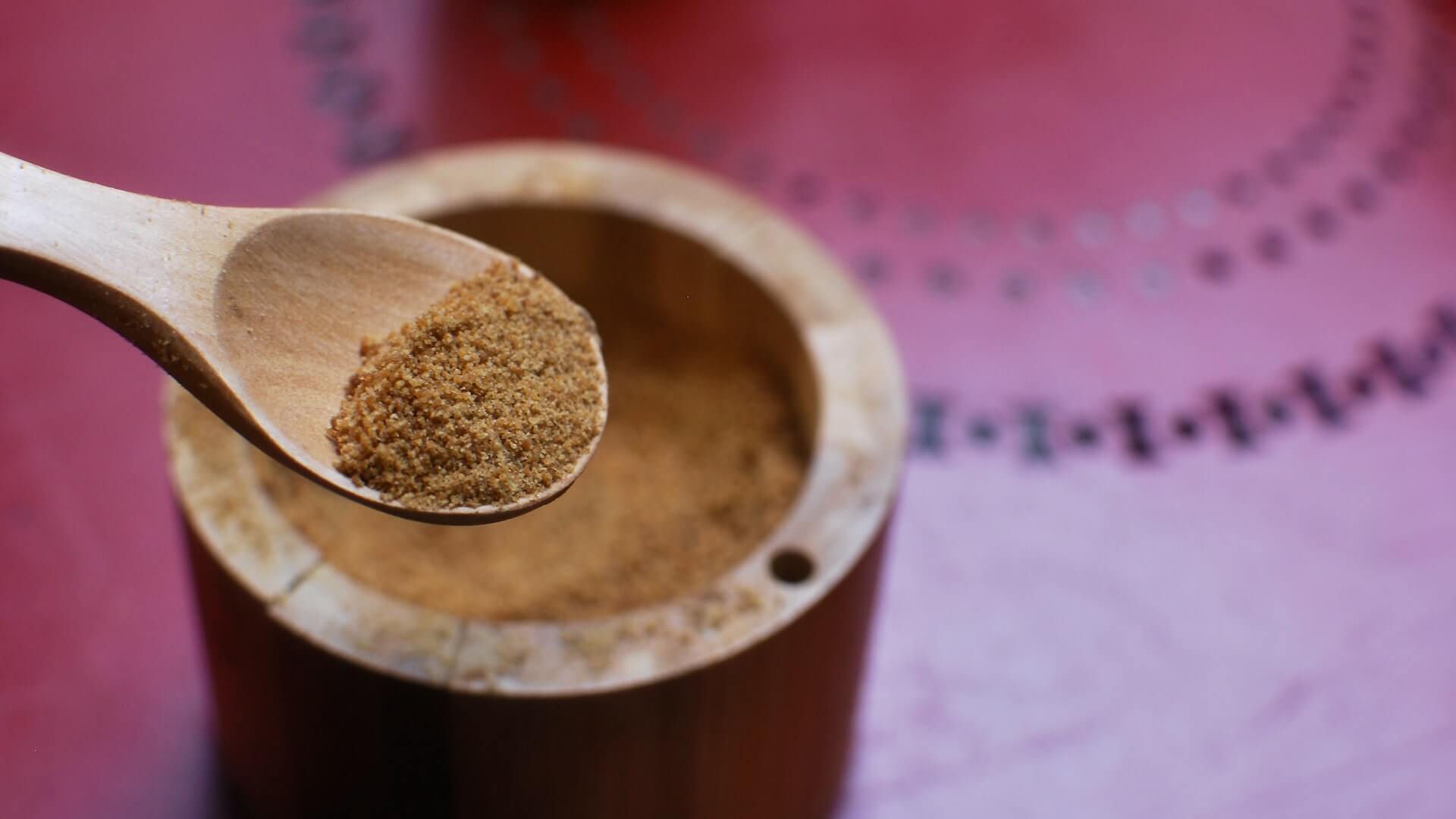
Is Coconut Sugar Good For You? 3 Benefits
You may have seen some of these health claims about coconut sugar. Some are unique to coconut sugar, while other sugar sources possess the same benefits.
- Lower Glucose Levels Spikes: This is due to the high inulin content (fiber) in coconut sugar vs. table sugar. Pairing fiber with any sugar will help control glycemic responses. Coconut sugar naturally contains inulin.⁷
- Helps Raise Blood Glucose Levels if Hypoglycemic: All types of sugar (coconut sugar, table sugar, brown sugar) will help raise a low blood glucose level, usually within 15 minutes. The body uses glucose for energy. Coconut sugar is a quick energy source that does the job!
- Represents A Source of Minerals: Coconut sugar does contain magnesium, potassium, iron, and zinc. Table sugar has absolutely no nutrients.⁶ When compared to other foods like fruits, vegetables, or beans, coconut sugar is not a high performer, but it is a way to get a bit more minerals compared to other sugar sources.
The Side Effects of Coconut Sugar
The main downside of coconut sugar is that it is still sugar. The benefits of fiber and mineral content diminish when sugar is consumed in the recommended amounts. Remember, high intakes of added sugars are linked to many chronic diseases.¹,²
Some research indicates that added sugars, especially those high in fructose, encourage the development of metabolic syndrome.⁸ Metabolic syndrome is a grouping of markers (like an elevated glucose level) that predispose someone to develop type two diabetes and cardiovascular disease. There is conflicting research indicating it might be just the extra calories from added sugar causing the problem and not the fructose content.⁸
All forms of sugar are broken down into fructose and glucose. Table sugar (also called sucrose) contains 50% fructose and 50% glucose. High fructose corn syrup contains about 55% fructose and 45% glucose. There are claims that coconut sugar is low in fructose or fructose free. Technically, there is less fructose initially, but coconut sugar comprises 83.1% sucrose, 11.4% glucose, and 3.7% fructose.⁷
Sucrose will be broken down into equal parts glucose and fructose. This leaves a total fructose content of about 45%. Depending on the batch of coconut sugar, the fructose content could be a little lower at 35 to 40%. Coconut sugar is by no means low in fructose. Just lower than table sugar and high fructose corn syrup. As a way of caution, all added sugars should be consumed in moderation, including coconut sugar.
How Does It Compare to Other Natural Sweeteners From a Glycemia Perspective?
Coconut Sugar vs. Agave Syrup
Agave syrup is higher in fructose content (80%)⁹ than coconut sugar (35 to 45% fructose). Glucose is used by our cells for energy. The liver processes fructose, so it is more of a delayed glycemic response leading to a lower glycemic index of about 17 compared to coconut sugar at 35-42.⁵,⁷ Many people feel this gives them the freedom to use agave syrup liberally. The U.S. Dietary Guidelines consider agave syrup an added sugar and recommends limiting the intake of all added sugars to less than 10%. Additionally, some people have a harder time digesting large amounts of fructose
Coconut Sugar vs. Honey
Fructose content ranges from 21 to 43% in honey. This is lower than coconut sugar. Honey boasts a low glycemic index of 19 despite its sweet taste. Many studies demonstrate the hypoglycemic effect of honey, but the reason is unclear. Theories range from fructose content, mineral content, or flavonoids (antioxidants), causing this beneficial lower glycemic response.¹⁰ Honey has significantly more wide-ranging research supporting its use as a natural sugar alternative for managing glycemic response and preventing or managing chronic disease.
Coconut Sugar vs. Cane Sugar
Cane sugar is similar to table sugar except that it is made from sugarcane vs. sugar beets. Cane sugar is less processed than table sugar, but is comparable to table sugar in terms of fructose content (50%) and doesn’t have any added benefits. The glycemic index of cane sugar is higher than coconut sugar at 60.¹¹
Coconut Sugar vs. Monk Fruit
Monk fruit comes from the Siraitia grosvenorii plant found in China. Monk fruit is commonly used as a no or low-calorie natural sweetener.¹² It is 300 times sweeter than table sugar, so you don’t need as much for the same sweetness. The glycemic index is zero for monk fruit by itself. Monk fruit is sometimes mixed with other sugars, which could raise the glycemic response.
Coconut Sugar vs. Maple Syrup
Maple syrup is a sweetener from the sap of maple trees and contains a small amount of minerals similar to coconut sugar. Like honey, maple syrup has some antioxidant properties. Maple syrup is a moderate glycemic food at 54, higher than coconut sugar.¹³ Coconut sugar would be a better choice due to its lower glycemic index and similar mineral content.

Overseeing Your Wellbeing As You Acquire Healthy Habits
The Signos app connects to a continuous glucose monitor (CGM) that monitors how your body responds to food. The integrated app provides real-time feedback on your glucose response to the food you eat and helps you figure out which foods are best for your body.
- Item 1
- Item 2
- item 3
Topics discussed in this article:
References
- https://pubmed.ncbi.nlm.nih.gov/28507007/
- https://pubmed.ncbi.nlm.nih.gov/31498044/
- https://www.dietaryguidelines.gov/sites/default/files/2020-12/Dietary_Guidelines_for_Americans_2020-2025.pdf
- https://www.heart.org/en/healthy-living/healthy-eating/eat-smart/sugar/added-sugars
- https://research.psru.ac.th/~rdi/files/res_journal53/2558_783.pdf
- https://www.researchgate.net/publication/283666441_Coconut_Inflorescence_Sap_and_its_Value_Addition_as_Sugar_-_Collection_Techniques_Yield_Properties_and_Market_Perspective
- https://pubmed.ncbi.nlm.nih.gov/31464412/
- https://pubmed.ncbi.nlm.nih.gov/31443567/
- https://foodinsight.org/what-is-agave-syrup/#:~:text=The%20sugars%20in%20agave%20syrup,impact%20on%20blood%20glucose%20levels.
- https://www.ncbi.nlm.nih.gov/pmc/articles/PMC5817209/
- https://glycemicindex.com/gi-search/?food_name=cane+sugar&product_category=&country=United+States&gi=&gi_filter=&serving_size_(g)=&serving_size_(g)_filter=&carbs_per_serve_(g)=&carbs_per_serve_(g)_filter=&gl=&gl_filter=
- https://www.ncbi.nlm.nih.gov/pmc/articles/PMC7973523/
- https://glycemicindex.com/gi-search/?food_name=maple+syrup&product_category=&country=United+States&gi=&gi_filter=&serving_size_(g)=&serving_size_(g)_filter=&carbs_per_serve_(g)=&carbs_per_serve_(g)_filter=&gl=&gl_filter=
- https://www.spiceography.com/cooking-with-coconut-sugar/

